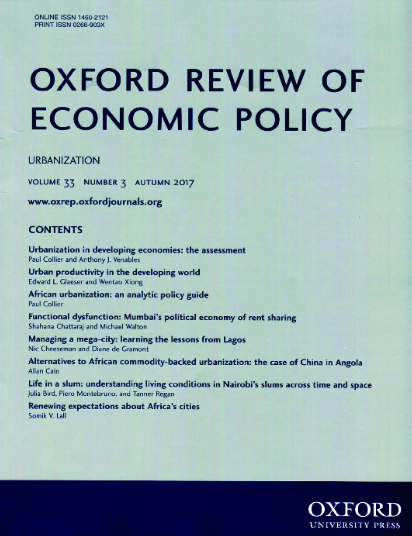国际货币基金组织与资本流动
IF 1.8
2区 经济学
Q2 ECONOMICS
引用次数: 3
摘要
对国际资本流动的控制是1944年国际货币基金组织在布雷顿森林会议上的一个核心问题。但到了20世纪70年代,主流思想鼓励开放的资本流动。随之而来的是一系列破坏性危机:20世纪80年代的拉丁美洲、1994年的墨西哥和1997年的亚洲。基金政策有所调整,但原因主要在于受援国。资本管制被明确拒绝。尽管如此,基金组织的观点开始转变,可能是受到2008年全球金融危机的鼓舞。人们越来越认识到,这些危机核心的资本流动激增往往是外部驱动的,反映了全球因素。适当的应对措施包括资本流动管理。基金在其2012年的机构观点中承认了这一点,但CFM处于政策工具箱的底部,被条件和约束所包围,保持了对CFM的污名。与此同时,许多新兴经济体正在增强应对过度资本流动的能力,尽管付出了一些代价(增长放缓、财政政策收紧、外汇储备庞大)。与此同时,流动性在增加,其中更大的部分是不稳定的投资组合流动。CFM措施在这种新环境中仍然具有重要地位,但基金组织不愿接受这些措施,这意味着仍然缺乏对有效CFM运作的深入讨论。本文章由计算机程序翻译,如有差异,请以英文原文为准。
The International Monetary Fund and capital flows
Controls on international capital flows were a central issue for the International Monetary Fund at Bretton Woods in 1944. But by the 1970s, mainstream thinking was encouraging open capital flows. A succession of damaging crises followed: Latin America in the 1980s, Mexico again in 1994, and Asia in 1997. Fund policies were tweaked, but the causes were seen as being largely in the recipient countries. Capital controls were specifically rejected.
Nevertheless, the Fund’s view began to shift, probably encouraged by the 2008 global financial crisis. There was a growing recognition that the capital-flow surges at the heart of these crises were often externally driven, reflecting global factors. The appropriate response would include capital flow management (CFM). The Fund recognized this in its 2012 Institutional View, but CFM was at the bottom of the policy toolbox, surrounded by conditions and constraints, maintaining the stigma on CFM.
Meanwhile many emerging economies were enhancing their ability to cope with excessive capital flows, although at some cost (slower growth, tighter fiscal policy, large foreign-exchange reserves). At the same time the flows were increasing, with a bigger component of flighty portfolio flows. CFM measures still have an important place in this new environment, but the Fund’s reluctance to embrace them means that a deep discussion on operationalizing effective CFMs is still lacking.
求助全文
通过发布文献求助,成功后即可免费获取论文全文。
去求助
来源期刊

Oxford Review of Economic Policy
ECONOMICS-
CiteScore
12.50
自引率
1.50%
发文量
41
期刊介绍:
The Oxford Review of Economic Policy is a refereed journal which is published quarterly. Each issue concentrates on a current theme in economic policy, with a balance between macro- and microeconomics, and comprises an assessment and a number of articles. It gives a valuable appraisal of economic policies worldwide. While the analysis is challenging and at the forefront of current thinking, articles are presented in non-technical language to make them readily accessible to all readers. The Oxford Review is aimed at a wide audience including government, business and policy-makers, as well as academics and students. It is required reading for those who need to know where research is leading.
 求助内容:
求助内容: 应助结果提醒方式:
应助结果提醒方式:


